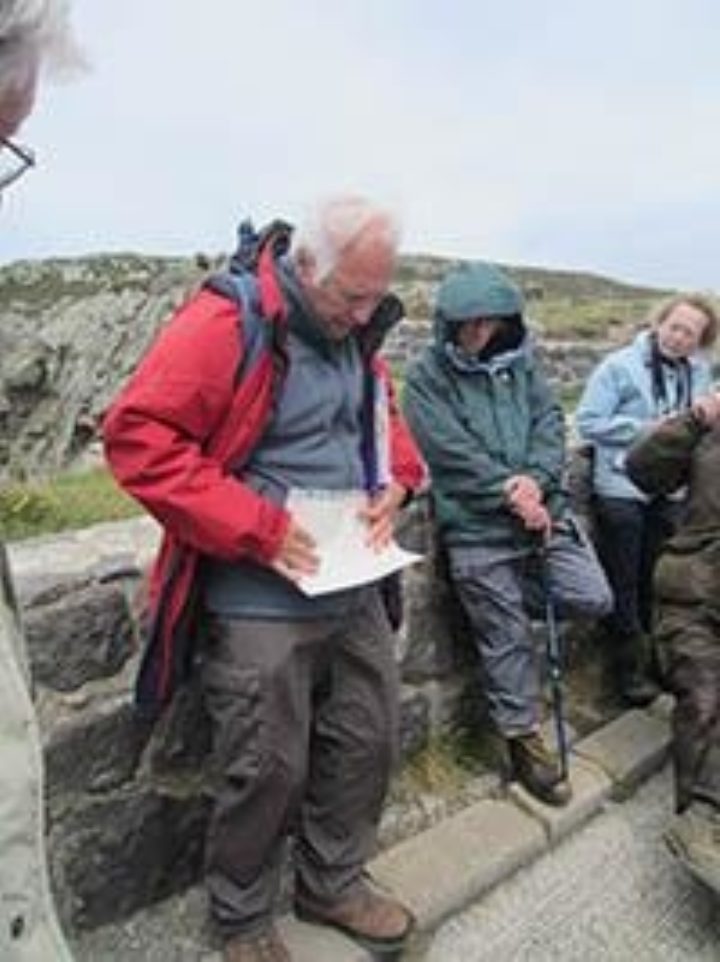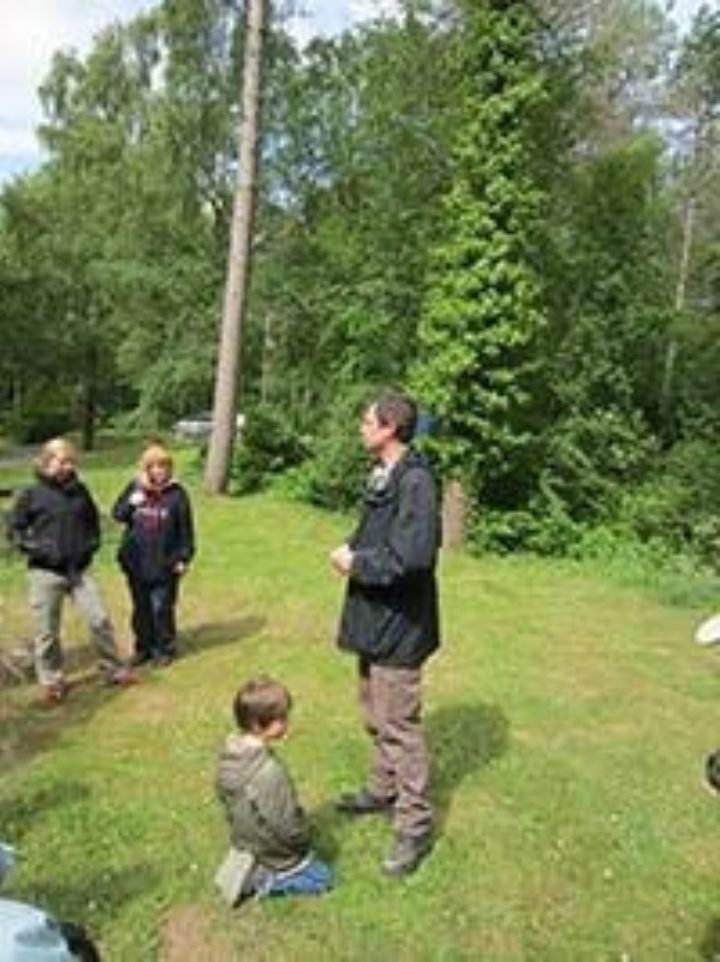July 2013: Field Trip
Published on 1st July 2013
Field Trip Feedback – It doesn’t always rain in North Wales!

This year our trusty organisers Professor John Good OBE and his colleague Dr Tony Ramsay, Honorary Senior Lecturer in Geology at Cardiff University, put together an extremely varied programme for the 27 eager participants, who ranged from 24 to over 70 years old and included many new Fellows of the Society.
Day One was spent on the sunny Island of Anglesey, where we visited 3 areas, starting with Parys Mountain, the site of a late 18th Century copper mine, where Dr David Jenkins (past chairman and founder member of Amlwch Industrial Heritage Trust) provided fascinating insights into the industrial archaeology – this is an extraordinary landscape in terms of topography and colours, gradually being colonised by plants and lichens, explained to us by Professor Alan J.M. Baker (a botanist/ecologist specialising in phytoremediation) and Dr William Purvis (a lichenologist, Associate at the Natural History Museum). We then drove to South Stack in search of some rare plants, including spotted rock rose Tuberaria guttata and fleawort Tephroseris integrifoliasubsp. maritima; alas these eluded us but we had further insights from Tony into the geology of the area and saw the amazing bird colonies (mainly guillemots and razorbills in spectacular numbers) on the cliffs, while the informative RSPB reserve lookout had live video footage of young choughs in a nest deep in the cliff face.

It was then onto Newborough Warren to hear from Craig Shuttleworth about the success of the red squirrel conservation programme and the many challenges faced (including how squirrels cross the Menai Bridge) and thence to visit a dune re-stabilisation project with Graham Williams (Countryside Council for Wales, Newborough Warden) and Llanddwyn Island, where Tony showed us the pillow larva and ‘melange’ on the beach, where again the forms and variety of colours of the rocks were striking. We all met up for an excellent dinner at the Straits Restaurant in Menai Bridge, which fortified us for
Day 2 – starting with a walk (battling the wind and sand-blasting!) on Great Orme, a massive dolomite peninsula and home to the beautiful silver-studded blue and grayling butterflies as well as some interesting plants such as the dwarf Cotoneaster integerrimus. The trip ended with a rather wet walk up to the semicircular valley of Cwm Idwal, bounded by the cliffs of Twll Du (Devil’s Kitchen), and the Llyn Ogwen lake, where Dr Barbara Jones (Upland Ecologist with CCW) explained about efforts to minimise grazing by sheep and goats to allow the alpine plants and scrubby heath to expand, so returning the landscape to its ‘original’ state. Dr Brian Rosen gave an interesting account of Charles Darwin’s visits to the area and we saw the erratic boulders which Darwin observed when investigating glaciations, while Tony showed us beautiful examples of flow-banded rhyolite and welded tuff. All-in-all, the field trip was a resounding success and much enjoyed by all participants!
Dr Elizabeth Rollinson - Executive Secretary, Linnean Society

